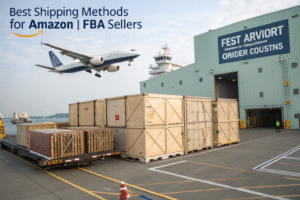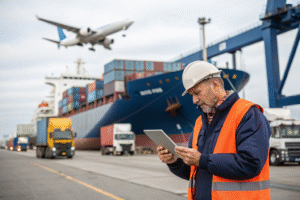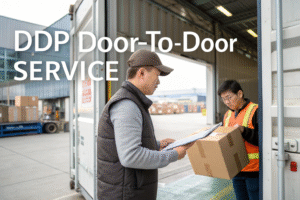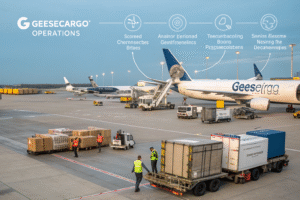When your shipments are late or stuck at customs, your whole business slows down. Delayed cargo disrupts production schedules, retail launches, and cash flow. I’ve worked with clients who lost thousands simply because their supply chain lacked structure and coordination. That’s where professional freight forwarding steps in.
Freight forwarding strengthens supply chain efficiency by optimizing transportation, managing documentation, reducing delays, and integrating visibility tools.
If you're managing large shipments across borders, this article explains how forwarders like GeeseCargo help reduce cost, speed up transit, and create a seamless supply chain.
How Do Freight Forwarders Optimize Logistics Routes?
The shortest path isn’t always the fastest—or the cheapest. Route planning is where many importers waste time or overspend.
Freight forwarders analyze multiple transport modes and select the best route based on speed, cost, and reliability.

How Do Forwarders Select Optimal Transport Modes?
Each cargo type and destination has different needs. We use tools like Freightos to compare ocean, air, rail, and truck transit times. For urgent goods, we may recommend multimodal shipping—air for priority SKUs, sea for the rest. We also evaluate routes using Project44 to assess congestion or risk.
What Is the Benefit of Multimodal Shipping?
Blending transport methods saves time and reduces cost. For example, we’ve helped clients move goods from Yiwu to the U.S. by combining truck-to-rail-to-ocean. It’s cheaper than air and faster than full sea routes. We rely on data from RailFreight.com and PortCall to build these hybrid solutions.
How Do Freight Forwarders Prevent Documentation Delays?
One missing invoice or an incorrect HS Code can delay an entire shipment. Poor documentation leads to inspections, fines, or even seizure.
Freight forwarders prepare, verify, and submit correct paperwork to ensure seamless customs clearance across borders.

What Documents Do Forwarders Handle?
We manage commercial invoices, packing lists, bill of lading, and certificates of origin. Using platforms like CargoX, we digitize documents and submit through customs portals like China’s Single Window.
How Do They Ensure Compliance?
Our team keeps up with customs regulations in the U.S., EU, and Asia. We match goods with proper HS codes and prepare licenses for restricted items. We also work closely with licensed customs brokers to prevent holds or audits.
How Does Freight Forwarding Reduce Transit Time Risks?
Unplanned events happen all the time—port strikes, vessel rollovers, customs holds. The faster you respond, the smaller the impact.
Freight forwarders actively manage in-transit disruptions with rerouting, carrier updates, and customs communication.
![]()
How Do They Track and Reroute Cargo?
Using real-time tracking systems, we monitor vessel progress, airline changes, and customs status. If a vessel is delayed, we find earlier alternatives. A recent client’s cargo was rerouted from Ningbo to Qingdao after port congestion—we avoided a 7-day delay.
How Do They Manage Communication With Carriers?
Our operations team coordinates with shipping lines and airlines daily. We receive alerts through systems like INTTRA and respond within hours to secure new bookings. This proactive action prevents inventory shortages and production downtime for our clients.
How Do Freight Forwarders Improve Supply Chain Visibility?
Many importers feel blind during transit. They don’t know where their shipment is, or if it will arrive on time.
Forwarders offer digital visibility tools that show real-time cargo status, enabling better planning and faster decisions.

What Platforms Offer Real-Time Tracking?
We use platforms like GoFreight, Flexport, or Logixboard to track milestones: pickup, export, sailing, arrival, customs, and delivery. Clients get shared portals or automated email alerts for key updates.
How Does Visibility Support Supply Chain Planning?
Knowing your cargo ETA helps schedule warehouse labor, plan last-mile delivery, and update inventory systems. For some clients, we also integrate shipment data into ERP systems, giving their team live alerts without manual updates.
Conclusion
Freight forwarding is more than just shipping—it’s the engine that keeps your supply chain moving. From choosing the best route to clearing customs and avoiding delays, we at GeeseCargo focus on every detail. We help you reduce downtime, improve delivery accuracy, and gain full control over your logistics flow. If you want to take your supply chain from reactive to efficient, let’s build that system together.









